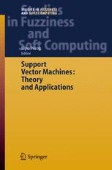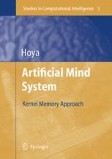Search
Search Results
-
Support Vector Machines – An Introduction
This is a book about learning from empirical data (i.e., examples, samples, measurements, records, patterns or observations) by applying support...
-
Improving the Performance of the Support Vector Machine: Two Geometrical Scaling Methods
In this chapter, we discuss two possible ways of improving the performance of the SVM, using geometric methods. The first adapts the kernel by...
-
Uniform Coverage of Simple Surfaces Embedded in $\mathbb{R}^3$ for Auto-Body Painting
We develop a procedure for automated trajectory generation for robotic spray painting applications. Painting requires that the spray gun deposit...
-
Sampling-Based Motion Planning under Kinematic Loop-Closure Constraints
Kinematic loop-closure constraints significantly increase the difficulty of motion planning for articulated mechanisms. Configurations of...
-
Voronoi-Based Outdoor Traversable Region Modelling
Nowadays, the interest in mobile robotics working in outdoor environments is increasing due to the new applications focussed on aiding humans. To...
-
From Classical Connectionist Models to Probabilistic/Generalised Regression Neural Networks (PNNs/GRNNs)
This chapter begins by briefly summarising some of the well-known classical connectionist/artificial neural network models such as multi-layered...
-
Language and Thinking Modules
In this chapter, we focus upon the two modules which are closely tied to the concept of “action planning”, i.e. the 1) language and 2) thinking...
-
Sensation and Perception Modules
In any kind of creature, both the mechanisms of sensation and perception are indispensable for continuous living, e.g. to find edible plants/fruits...
-
Use of Fuzzy Feature Descriptions to Recognize Handwritten Alphanumeric Characters
The main challenge in handwritten character recognition involves the development of a method that can generate descriptions of the handwritten...
-
A Longitudinal Comparison of Supervised and Unsupervised Learning Approaches to Iso-Resource Grou** for Acute Healthcare in Australia
Estimating resource consumption of hospital patients is important for various tasks such as hospital funding, and management and allocation of...
-
B Experimental Setups and Acoustic Environments
In this chapter, the experimental setup and the acoustic environments are described, which are used in this work for illustrating the properties of...
-
Reinforcement Learning: A Brief Overview
Learning techniques can be usefully grouped by the type of feedback that is available to the learner. A commonly drawn distinction is that between...
-
An Analysis of Continuous-Valued Representations for Learning Classifier Systems
Learning Classifier Systems [11] typically use a ternary representation to encode the environmental condition that a classifier matches. However,...
-
Tests of Hypothesis: Means
In many expositions of fuzzy methods, fuzzy techniques are described as an alternative to a more traditional statistical approach. In this chapter,...
-
Fuzzy Time Series Analysis and Forecasting
The problem of system modeling and identification has attracted considerable attention during the past decades mostly because of a large number of...
-
The Mathematics of Learning: Dealing with Data *
Learning is key to develo** systems tailored to a broad range of data analysis and information extraction tasks. We outline the mathematical...
-
Data Driven Fuzzy Modelling with Neural Networks
Extraction of models for complex systems from numerical data of behavior is studied. In particular, systems representable as sets of fuzzy if-then...
-
Web Page Classification*
This chapter describes systems that automatically classify web pages into meaningful categories. It first defines two types of web page...
-
Sequential Pattern Mining by Pattern-Growth: Principles and Extensions*
Sequential pattern mining is an important data mining problem with broad applications. However, it is also a challenging problem since the mining may...
-
Intelligent Agents to Improve Adaptivity in A Web-Based Learning Environment
This chapter focuses on the use of intelligent agents in on-line learning environments in which educational organizations can equip students with...
